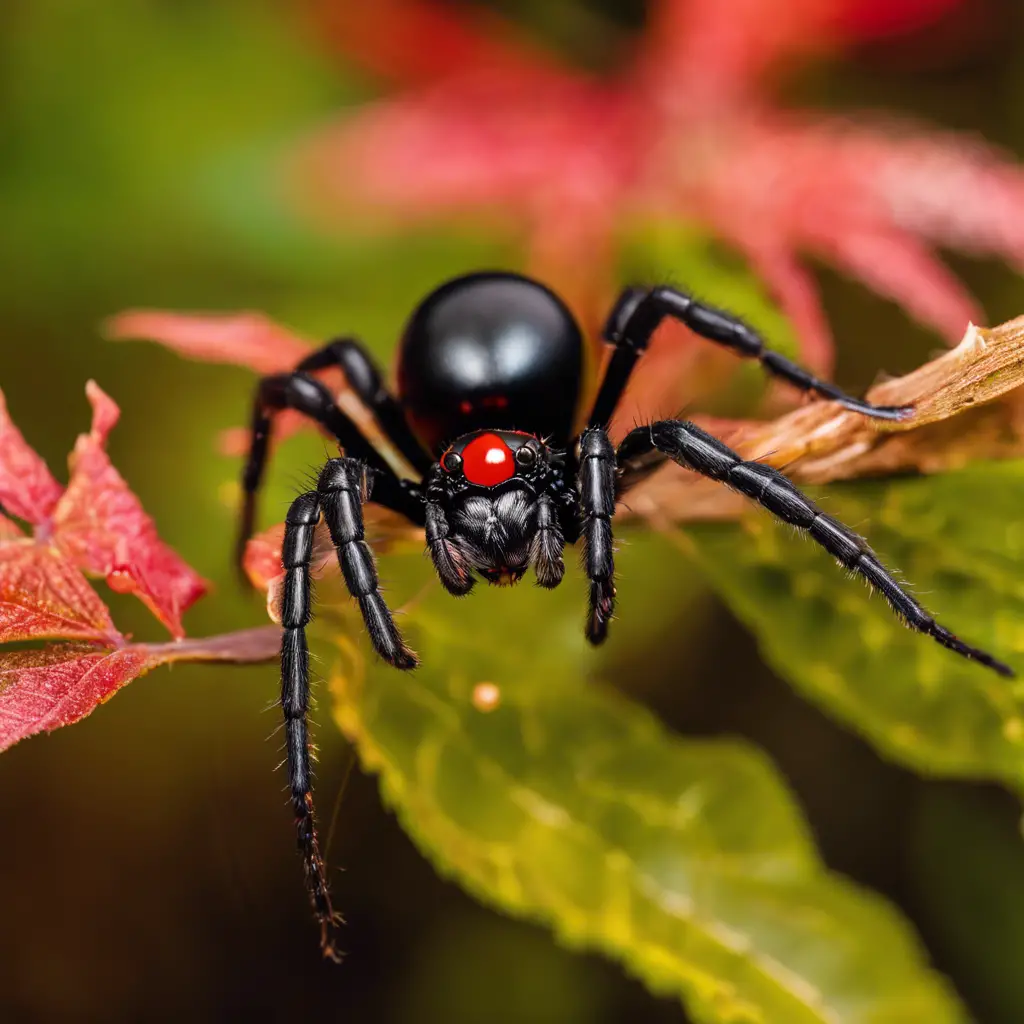If you’re curious about the ducks in Pennsylvania, you’ve come to the right place. This article will give you a scientific and detailed overview of the various duck species you can find in the state.
From the elegant Wood Duck to the familiar Mallard and the striking Hooded Merganser, Pennsylvania is home to a diverse range of ducks.
Get ready to explore their habitats, feeding habits, and distinctive features.
Let’s dive into the world of Pennsylvania’s ducks!
Key Takeaways
- There are several duck species found in Pennsylvania, including the Wood Duck, Mallard, Blue-winged Teal, Northern Shoveler, Gadwall, and American Wigeon.
- Ducks in Pennsylvania have different migration patterns and breeding habits. For example, the American Wigeon is known for its long-distance migrations, while the Canvasback prefers to breed in northern parts of North America and migrate to coastal areas.
- The scoter species of ducks, such as the Surf Scoter, White-winged Scoter, Black Scoter, Long-tailed Duck, and Bufflehead, have specific nesting and habitat preferences.
- Conservation efforts for ducks in Pennsylvania focus on protecting breeding and wintering habitats, monitoring population numbers, and addressing threats such as habitat loss, pollution, climate change, and disturbance.
Wood Duck

You should learn about the Wood Duck because it’s a fascinating species found in Pennsylvania.
The wood duck, or Aix sponsa, is a medium-sized duck species known for its vibrant plumage and unique behaviors. Wood ducks are commonly found in wetland areas such as swamps, marshes, and wooded ponds. They prefer habitats with plenty of vegetation and trees, as they nest in tree cavities.
It’s fascinating to observe their nesting behavior, as the female wood duck chooses a suitable tree cavity and lines it with feathers. They’re also known for their impressive ability to perch on branches and even jump from heights to the ground.
Additionally, wood ducks exhibit interesting behaviors such as their elaborate courtship displays and communal roosting habits, where they gather in large groups during the winter months.
Overall, the wood duck is a captivating species with unique habitat preferences and behaviors that make it worth learning about.
Mallard
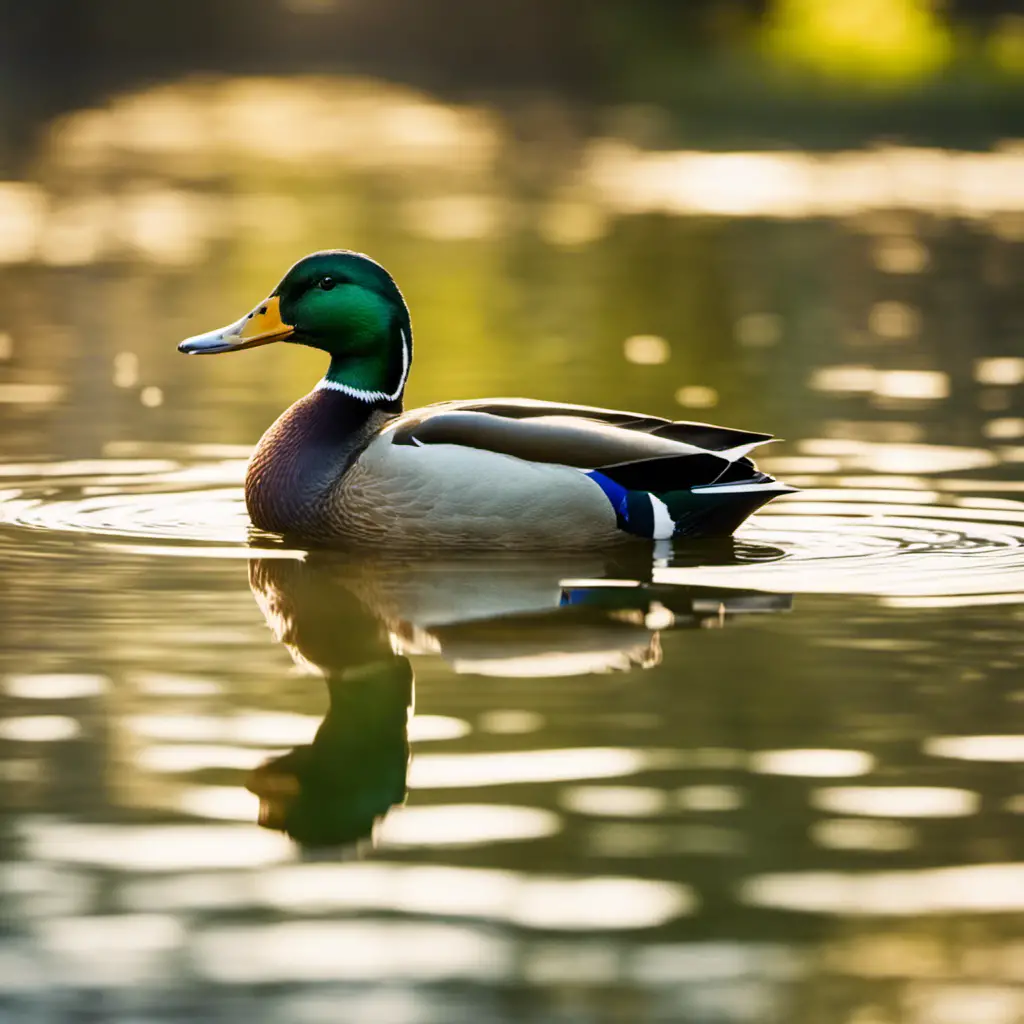
Do you know what distinguishes the mallard from other duck species? The mallard, scientifically known as Anas platyrhynchos, is one of the most recognizable ducks in North America. It is characterized by its vibrant green head, yellow bill, and chestnut-colored breast. Mallards are widespread and can be found in various habitats, including wetlands, ponds, lakes, and rivers. They are known for their adaptability and are often found in urban parks and residential areas. Mallards exhibit interesting migration patterns, with some populations being resident year-round and others migrating long distances. In Pennsylvania, mallard hunting is a popular recreational activity, with regulated seasons and bag limits to ensure sustainability. Understanding mallard migration patterns and behavior is essential for effective conservation and management of this iconic duck species.
| Physical Characteristics | Behavior |
|---|---|
| Vibrant green head | Adaptability |
| Yellow bill | Migration patterns |
| Chestnut-colored breast | Hunting patterns |
Blue-winged Teal
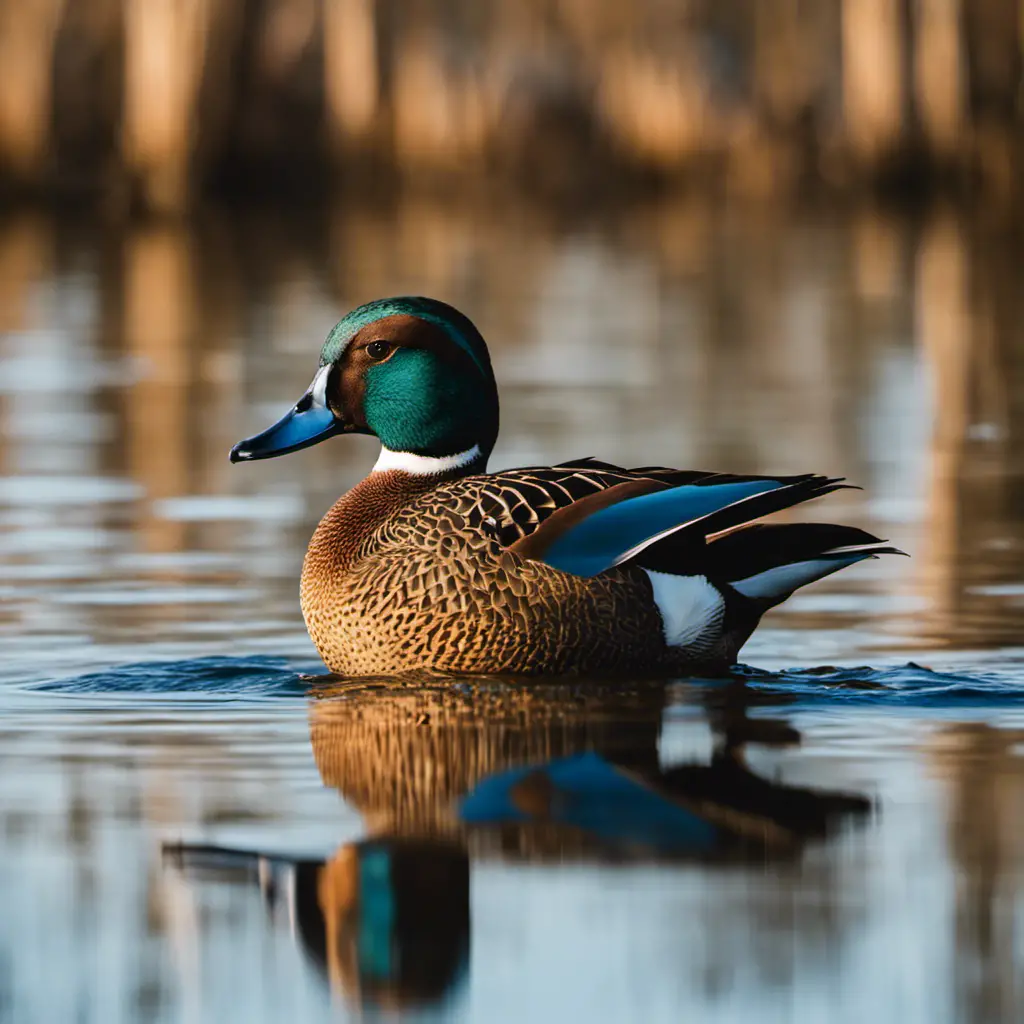
The blue-winged teal is a small duck species that can be found in wetlands and marshes throughout North America. These ducks are known for their vibrant blue feathers on their wings, which are exclusive to the males.
Blue-winged teals have a unique migration pattern, with some populations migrating from as far as South America to breed in North America. They travel in flocks, often making stops at various wetlands along their journey.
In terms of diet, blue-winged teals are primarily herbivorous, feeding on aquatic plants, seeds, and grasses. However, they also occasionally consume insects and small aquatic invertebrates. This diverse diet allows them to adapt to different wetland habitats and sustain their energy levels during migration.
Northern Shoveler
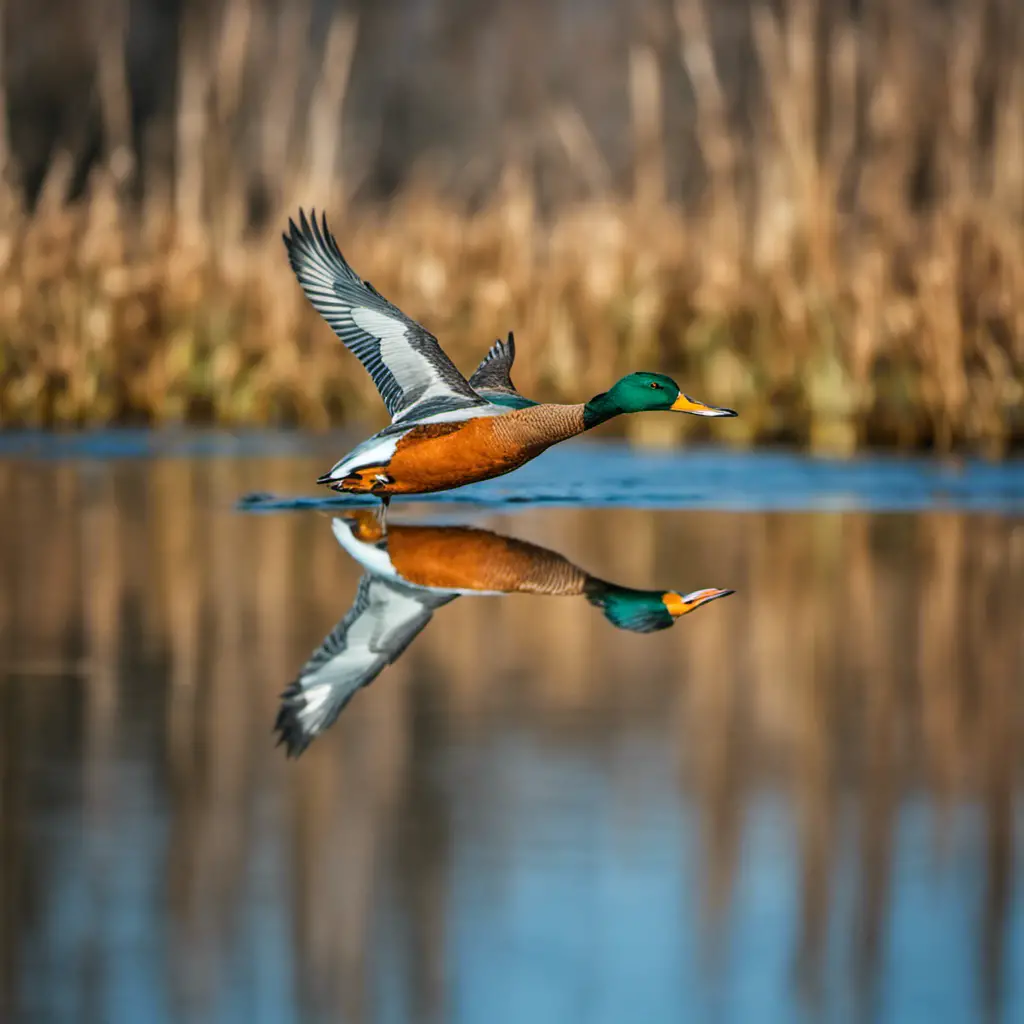
Have you heard about the Northern Shoveler? These ducks are known for their unique bill shape, which allows them to ‘shovel’ through the water and filter out small organisms to eat. The Northern Shoveler is a medium-sized duck species found across North America, including Pennsylvania.
Here are some interesting facts about their breeding habits and feeding behavior:
Breeding Habits:
Northern Shovelers typically breed in the northern parts of their range, including Canada and Alaska.
They prefer nesting in wetlands with abundant vegetation and open water.
During courtship, males perform elaborate displays, including head-bobbing and wing-flashing, to attract females.
Females build nests on the ground, usually hidden among vegetation, and lay a clutch of 8-12 eggs.
Both parents participate in incubating the eggs, which takes around 24-26 days.
Feeding Behavior:
Northern Shovelers are dabbling ducks that primarily feed by filtering out small invertebrates and plant matter from the water’s surface.
Their uniquely shaped bills contain comb-like structures called lamellae, which help them strain out food particles.
They often swim in small groups, creating a circular motion that stirs up the water and brings food to the surface.
Northern Shovelers are opportunistic feeders and will also consume seeds and aquatic vegetation when available.
They’ve a specialized tongue that allows them to filter water through the bill and retain food.
Gadwall
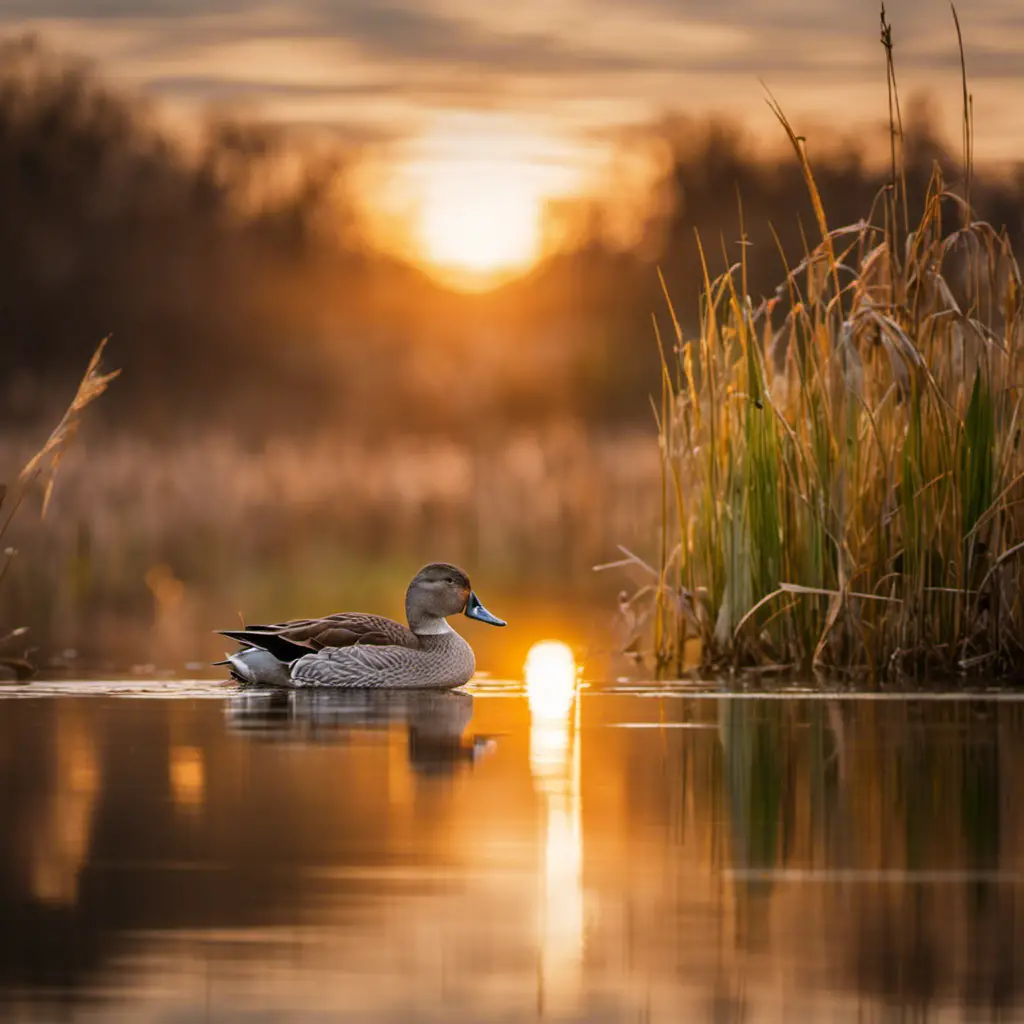
Have you ever seen a Gadwall in Pennsylvania? These medium-sized dabbling ducks are a common sight in the state during their migration periods.
The Gadwall, scientifically known as Anas strepera, is known for its beautiful plumage, with males sporting a gray body, black rear end, and a distinctive white patch on their wings.
Conservation efforts have been crucial in maintaining their population and ensuring their survival. Gadwalls are known for their long-distance migration patterns, with individuals traveling from their breeding grounds in the northern parts of North America to their wintering grounds in the southern United States, Mexico, and even as far as Central America.
During migration, they can often be seen in wetlands, lakes, and marshes, where they feed on aquatic vegetation, insects, and small invertebrates.
Keep an eye out for these fascinating ducks during their seasonal visits to Pennsylvania!
American Wigeon
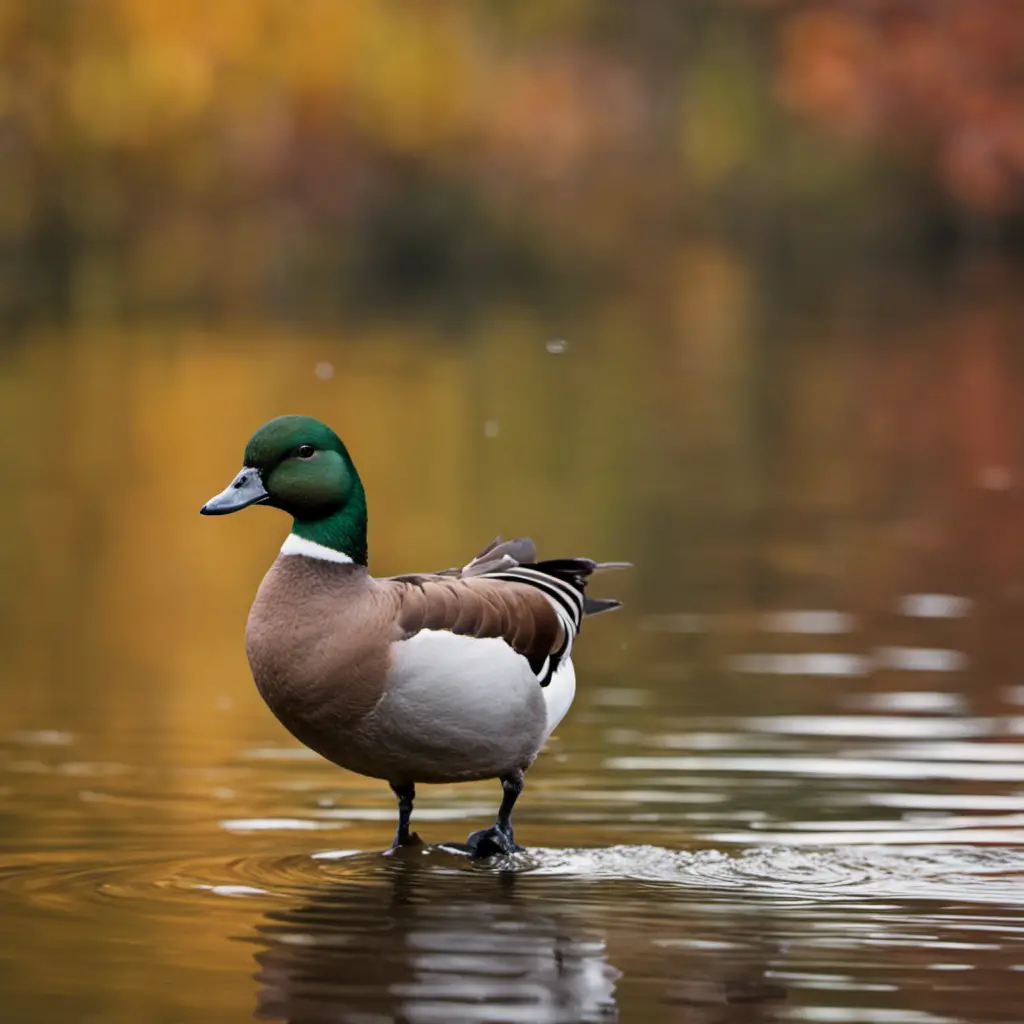
Did you know that the American Wigeon is easily distinguishable by its bright green patch on its head and sleek gray body?
This fascinating duck species can be found in a variety of habitats across North America, including marshes, wetlands, and shallow lakes. During the breeding season, American Wigeons prefer nesting in the grassy areas near water bodies. However, they’re highly adaptable and can also be spotted in agricultural fields and urban parks.
When it comes to migration patterns, these ducks are known for their impressive long-distance journeys. They breed in the northern parts of North America and then travel southwards during the winter months, reaching as far as Central America.
American Wigeons are truly remarkable creatures, showcasing both beauty and resilience in their habitat preferences and migration patterns.
Canvasback

You can easily identify the Canvasback by its red head and distinctively long, sloping profile. These large diving ducks are known for their unique migration patterns and have been the focus of conservation efforts.
Canvasbacks breed in the northern parts of North America, including Alaska and Canada, and migrate south during the winter months. They can be found along the coastal areas of the United States, as well as inland bodies of water such as lakes and rivers.
Conservation efforts for the Canvasback have focused on protecting their breeding and wintering habitats, as well as monitoring their population numbers and addressing any threats they may face. By understanding their migration patterns and implementing conservation measures, we can ensure the continued survival of this magnificent species.
Redhead
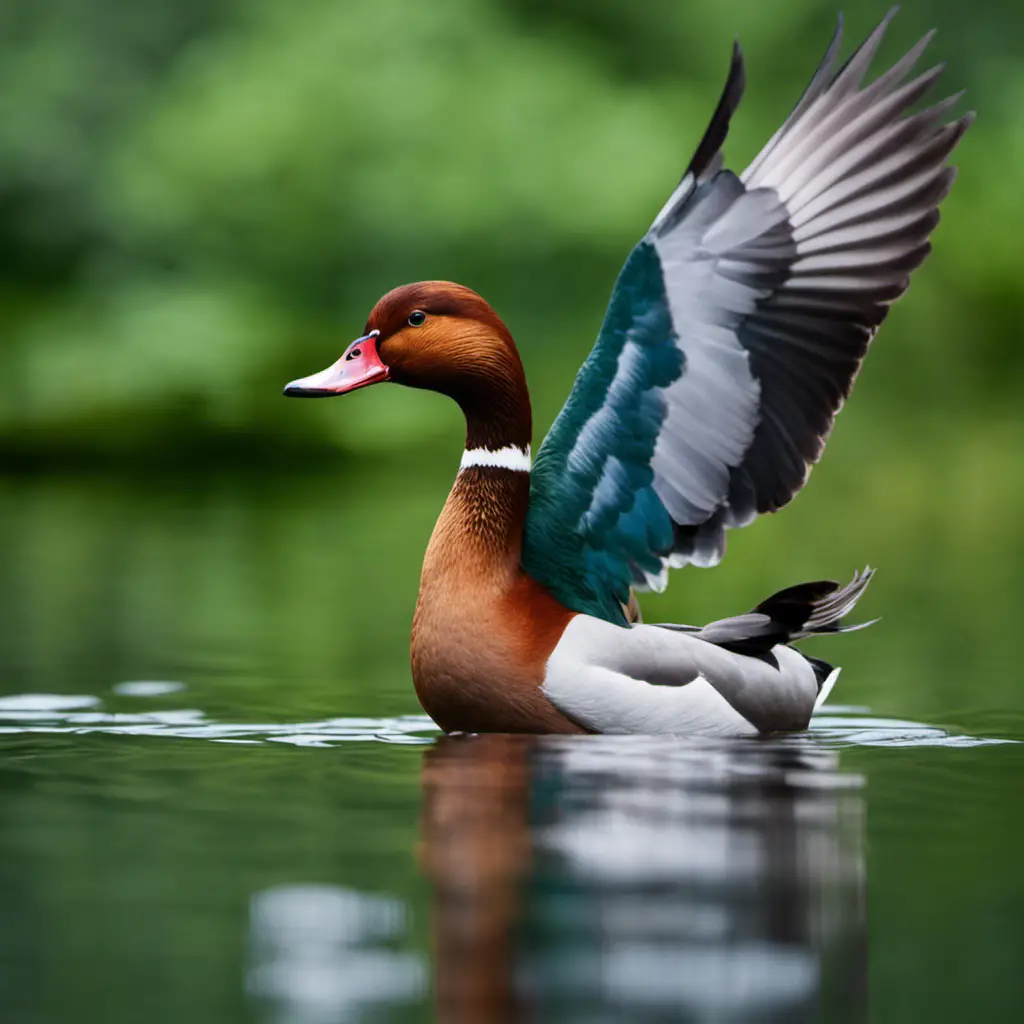
You can spot a few Redheads swimming in the lake today. Redheads, also known as Aythya americana, are a species of diving duck that can be found in various habitats across North America. They prefer freshwater habitats such as lakes, ponds, and marshes, where they can find an abundance of aquatic vegetation and invertebrates to feed on. Redheads are known for their distinctive red heads and gray bodies, which make them easily recognizable.
When it comes to migration patterns, Redheads are known to breed in the prairie pothole region of North America and migrate to coastal areas during the winter. They often form large flocks and can be found in areas such as the Gulf Coast and southern California during the colder months. Redheads are fascinating creatures that have adapted to specific habitats and undertake impressive migrations to find suitable conditions for breeding and survival.
- Redheads prefer freshwater habitats with ample vegetation and food sources.
- They’ve distinct red heads and gray bodies.
- Redheads breed in the prairie pothole region of North America.
- They migrate to coastal areas during the winter.
- Large flocks of Redheads can be found in the Gulf Coast and southern California during colder months.
Ring-necked Duck
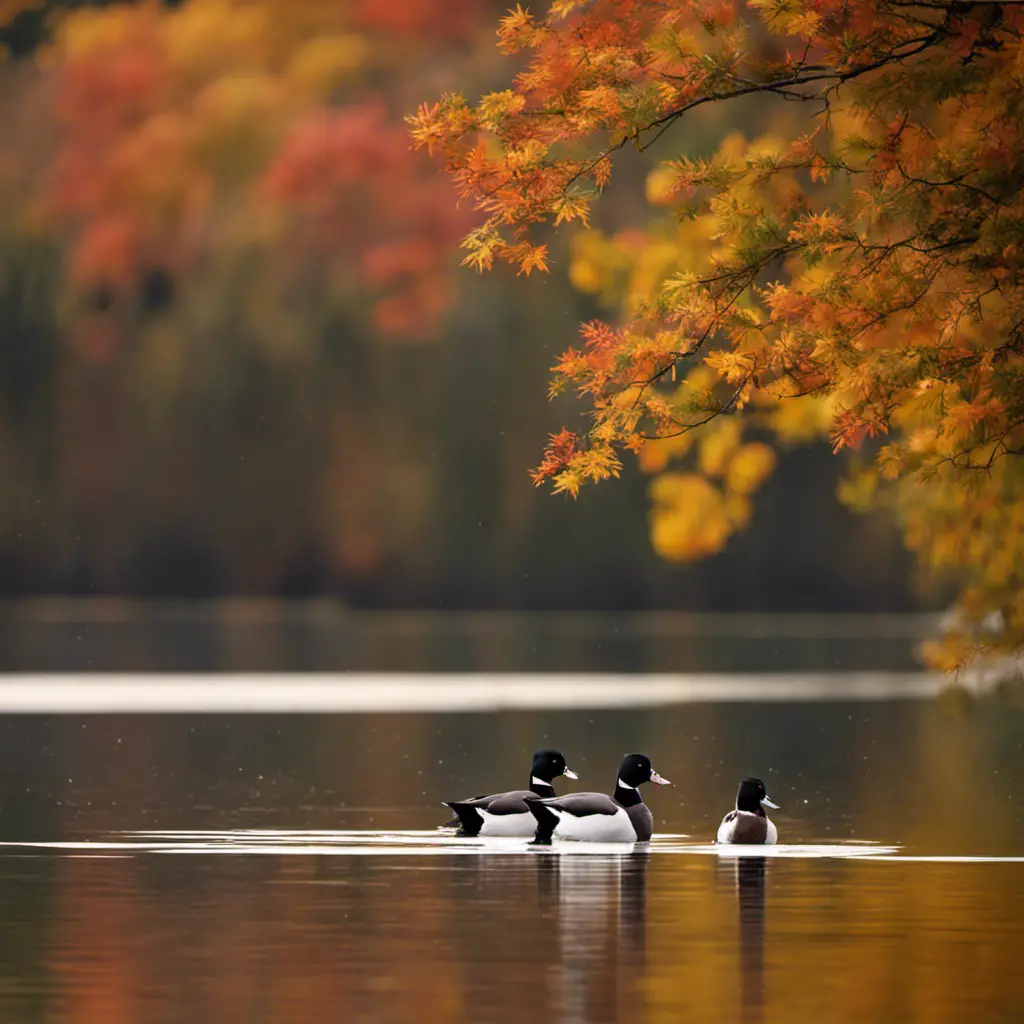
There are several Ring-necked Ducks swimming near the shore today. The Ring-necked Duck (Aythya collaris) is a medium-sized diving duck that can be found in North America. They prefer freshwater habitats such as lakes, ponds, and marshes with dense vegetation. These ducks are known for their distinctive black heads with a white ring around their necks, hence their name.
Ring-necked Ducks are highly adapted to their aquatic lifestyle. They’ve webbed feet that help them swim and dive underwater to feed on aquatic plants, insects, and small invertebrates. They also have a streamlined body shape and a specialized bill for foraging.
In terms of conservation status, Ring-necked Ducks are considered to be of least concern. Their population is stable and they’ve a wide distribution across their range. However, like many other waterfowl species, they face threats such as habitat loss and degradation due to human activities, pollution, and climate change. Conservation efforts should focus on preserving and restoring their preferred habitats to ensure their long-term survival.
Greater Scaup
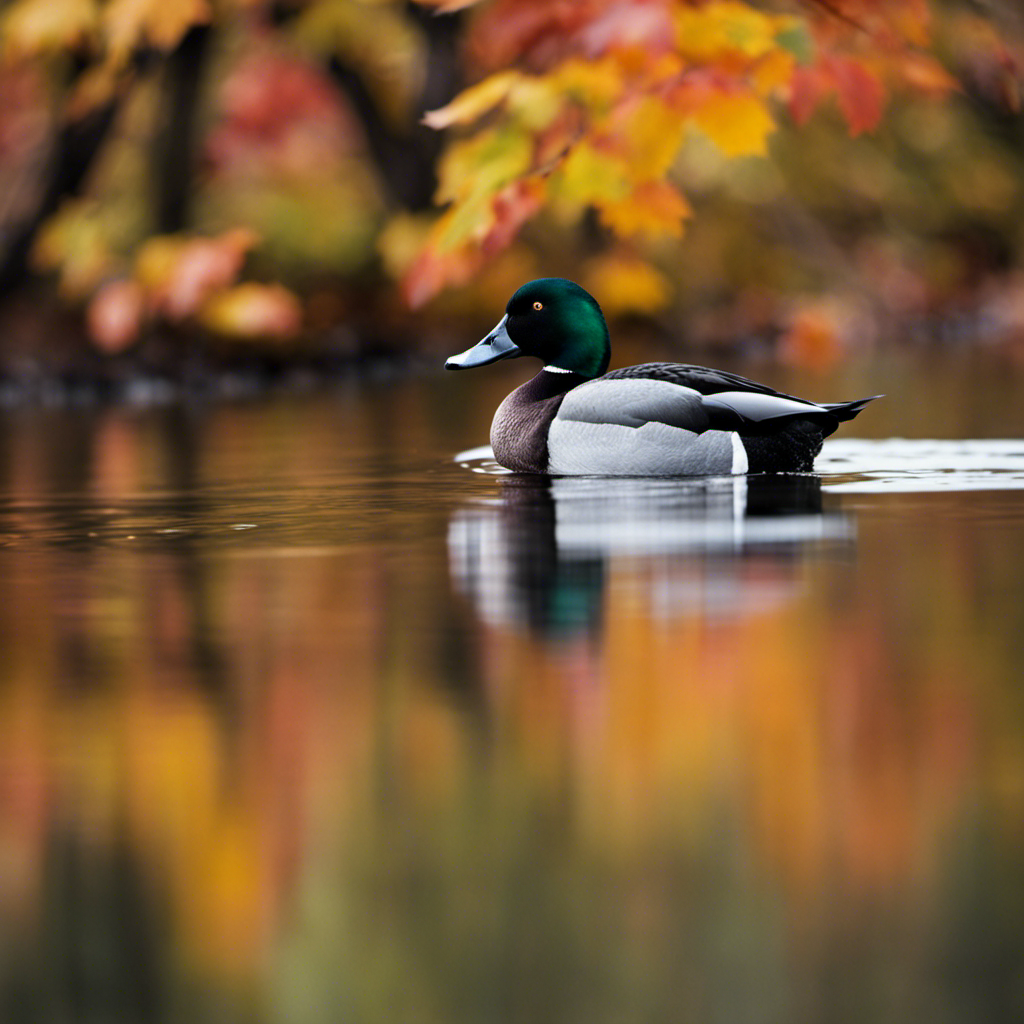
Take a closer look at the Greater Scaup, a large diving duck found in Pennsylvania’s freshwater habitats. This species, also known as Aythya marila, is known for its unique migration patterns and the conservation efforts put in place to protect it.
Here are five important points about the Greater Scaup:
Migration Patterns: Greater Scaups breed in the northern parts of North America, including Alaska and Canada, and migrate south during the winter months. They can be found in Pennsylvania’s freshwater habitats during this time.
Wintering Grounds: The Greater Scaup prefers larger bodies of water, such as lakes, reservoirs, and coastal areas. They gather in large flocks to feed and rest during their winter stay.
Conservation Efforts: Due to declining populations, conservation efforts have been put in place to protect the Greater Scaup. These include habitat preservation, limiting hunting seasons, and monitoring breeding sites.
Threats: The Greater Scaup faces several threats, including habitat loss, pollution, climate change, and disturbance from human activities. These factors contribute to their declining numbers.
Importance to Ecosystem: The Greater Scaup plays a vital role in the ecosystem as it helps control aquatic invertebrate populations and serves as prey for larger predators.
Understanding the migration patterns and implementing conservation efforts are crucial for the long-term survival of the Greater Scaup.
Lesser Scaup
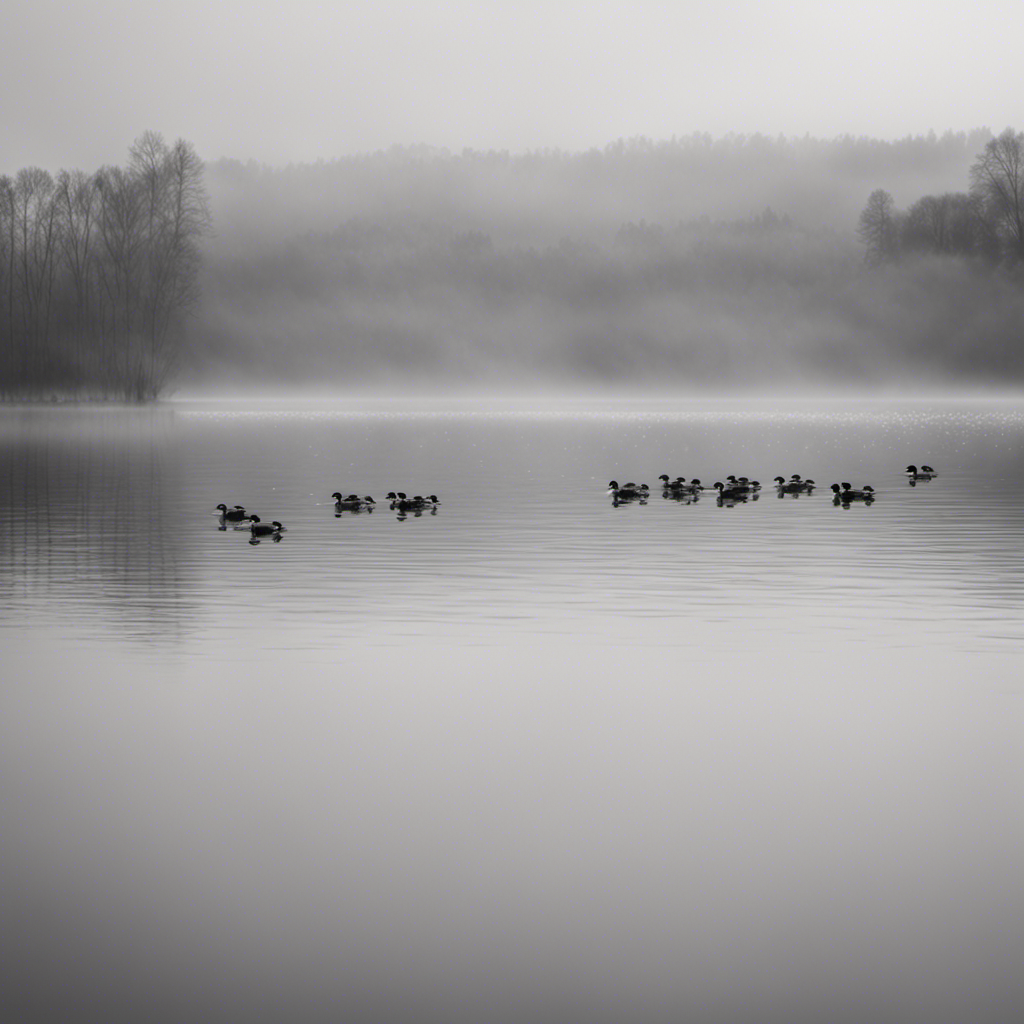
Learn more about the Lesser Scaup by exploring its habitat and feeding behaviors. The Lesser Scaup (Aythya affinis) is a migratory diving duck that can be found in North America. These ducks have a wide range, breeding in the northern regions of the continent and migrating to the southern regions for the winter. Understanding their migration patterns is crucial for the conservation efforts of this species.
| Migration Patterns | Conservation Efforts |
|---|---|
| – Breeding grounds in northern regions | – Protecting breeding habitats |
| – Wintering grounds in southern regions | – Restoring wetland habitats |
| – Migrate in large flocks | – Monitoring population numbers |
| – Follow flyways and stopover sites | – Reducing hunting pressure |
Conservation efforts for the Lesser Scaup focus on protecting and restoring their breeding and wintering habitats. By monitoring their population numbers and reducing hunting pressure, we can ensure the survival of this beautiful species for future generations to enjoy.
Surf Scoter
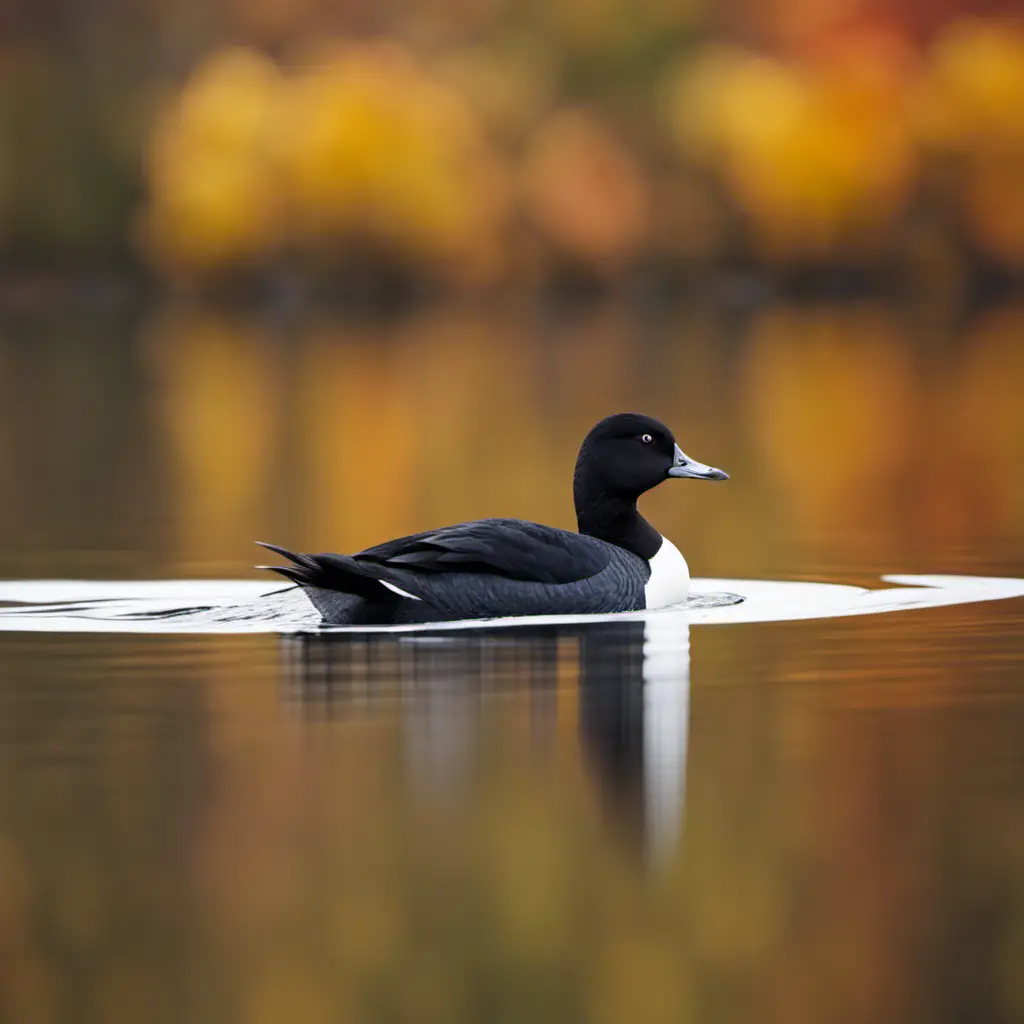
Do you know what a Surf Scoter looks like?
The Surf Scoter (Melanitta perspicillata) is a large sea duck found along the coastlines of North America. Here are some key characteristics of the Surf Scoter:
- Size: They measure around 19-22 inches in length with a wingspan of 30-34 inches.
- Appearance: Males have black plumage with a distinctive white patch on their forehead, while females have dark brown feathers.
- Bill: They’ve a large, colorful bill that’s black with an orange knob at the base.
- Habitat: Surf Scoters are commonly found in marine environments, particularly in areas with rocky coastlines and strong wave action.
- Conservation efforts: Due to declining populations, conservation efforts have focused on protecting their wintering and breeding habitats, reducing pollution, and promoting sustainable fishing practices.
Breeding habits:
Surf Scoters breed in the Arctic tundra, where they form monogamous pairs and build nests on the ground near freshwater lakes. Females lay 5-9 eggs and both parents take turns incubating them for about a month. Once hatched, the young ducklings are led to the nearest water source by their mother.
White-winged Scoter

Have you seen a White-winged Scoter? These large diving ducks are known for their striking appearance and fascinating behavior.
White-winged Scoters are migratory birds that breed in the northern regions of North America and Eurasia, including Alaska and Canada. During the breeding season, they prefer nesting near freshwater lakes and wetlands. The females lay their eggs in a well-concealed nest on the ground, typically close to water. After the eggs hatch, the ducklings are led to the nearest water source by the female.
As winter approaches, White-winged Scoters embark on long-distance migrations to their wintering grounds along the coasts of North America. They’re often seen in large flocks, diving for mollusks and crustaceans in the ocean.
Keep an eye out for these magnificent ducks during their migration periods and witness their impressive breeding habits.
Black Scoter
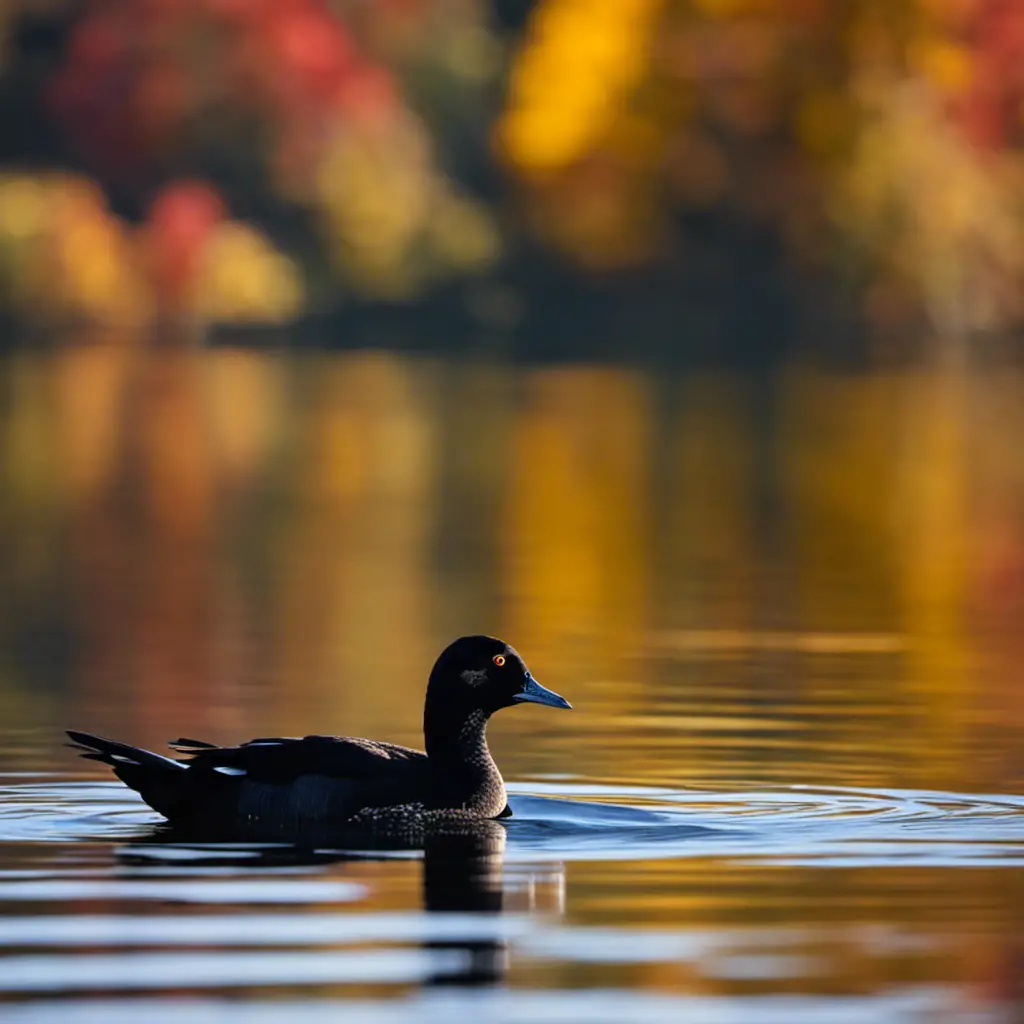
Did you know that the Black Scoter is another species of diving duck that can be found in Pennsylvania? These ducks are fascinating creatures with unique migration patterns and breeding habits. Here are some interesting facts about the Black Scoter:
Migration Patterns: Black Scoters are known for their long-distance migration, traveling from their breeding grounds in the Arctic to wintering areas along the coasts of North America. They often form large flocks during migration and can cover thousands of miles.
Breeding Habits: Black Scoters breed in the boreal forests of Canada and Alaska, typically near freshwater lakes and ponds. They form monogamous pairs during the breeding season and build their nests on the ground, using grasses and other vegetation for insulation.
Nesting Behavior: The female Black Scoter lays an average of 6-9 eggs in her nest, which she incubates for about 27-30 days. Once the eggs hatch, the ducklings are able to swim and feed themselves shortly after birth.
Feeding Habits: Black Scoters are diving ducks, meaning they dive underwater to catch their prey. They primarily feed on benthic invertebrates, such as mollusks and crustaceans, which they find by diving to depths of up to 60 feet.
Conservation Status: While Black Scoters aren’t currently listed as endangered, their populations are declining due to habitat loss and pollution. Efforts are being made to protect their breeding and wintering areas and promote conservation measures to ensure their survival.
Long-tailed Duck
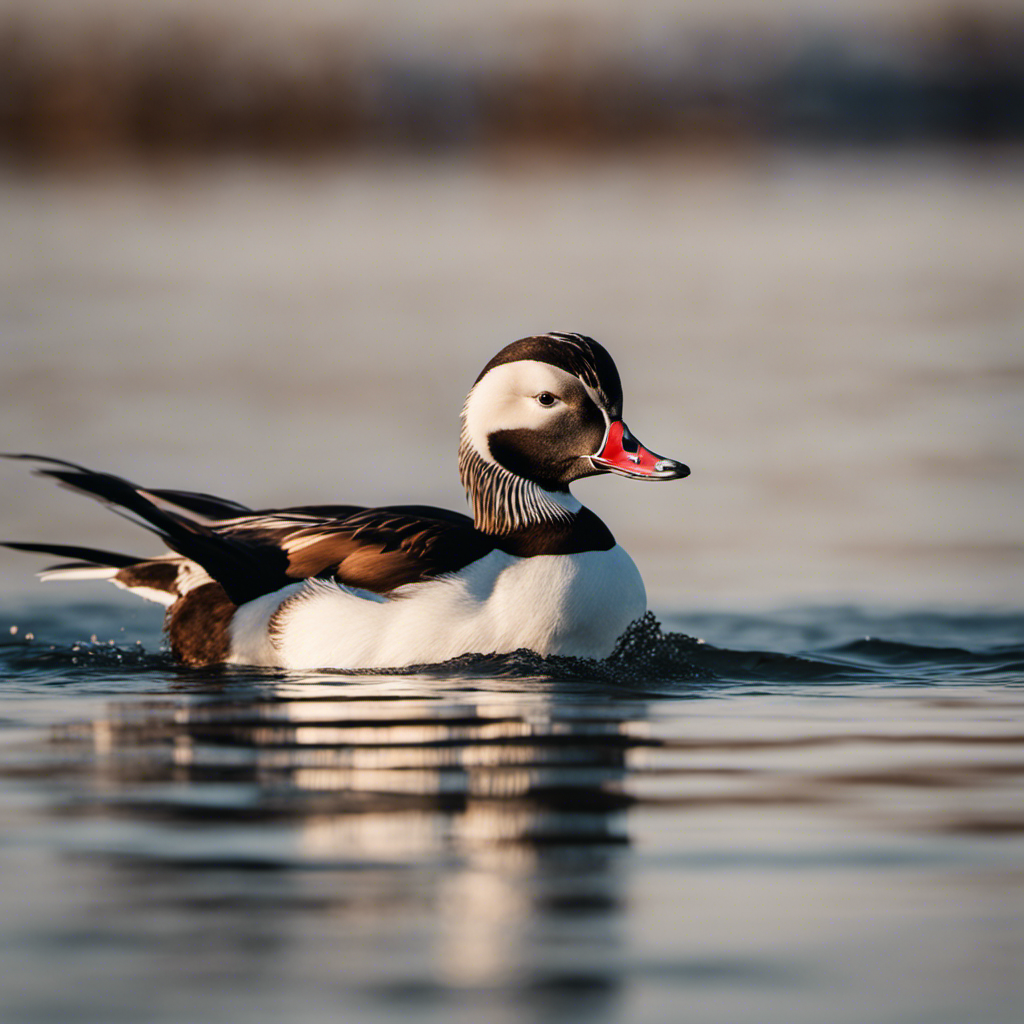
If you look closely, you’ll notice that the Long-tailed Duck has a distinctively long tail, which sets it apart from other duck species. This unique feature is just one of the many fascinating aspects of this beautiful bird. The Long-tailed Duck, also known as the Oldsquaw, is a medium-sized sea duck that is found in the Northern Hemisphere. It breeds in the Arctic regions of North America and Europe, and spends its winters along the coasts of North America and Europe.
The Long-tailed Duck is known for its remarkable migration patterns. During the breeding season, it can be found nesting in freshwater lakes and ponds in the Arctic tundra. However, when winter arrives, these ducks undertake long and impressive migrations to their wintering grounds. They travel to coastal areas where they can find open water and abundant food sources.
To better understand the Long-tailed Duck’s habitat and migration patterns, let’s take a look at the table below:
| Habitat | Migration Patterns |
|---|---|
| Arctic Tundra | Breeding season |
| Coastal Areas | Wintering grounds |
Bufflehead
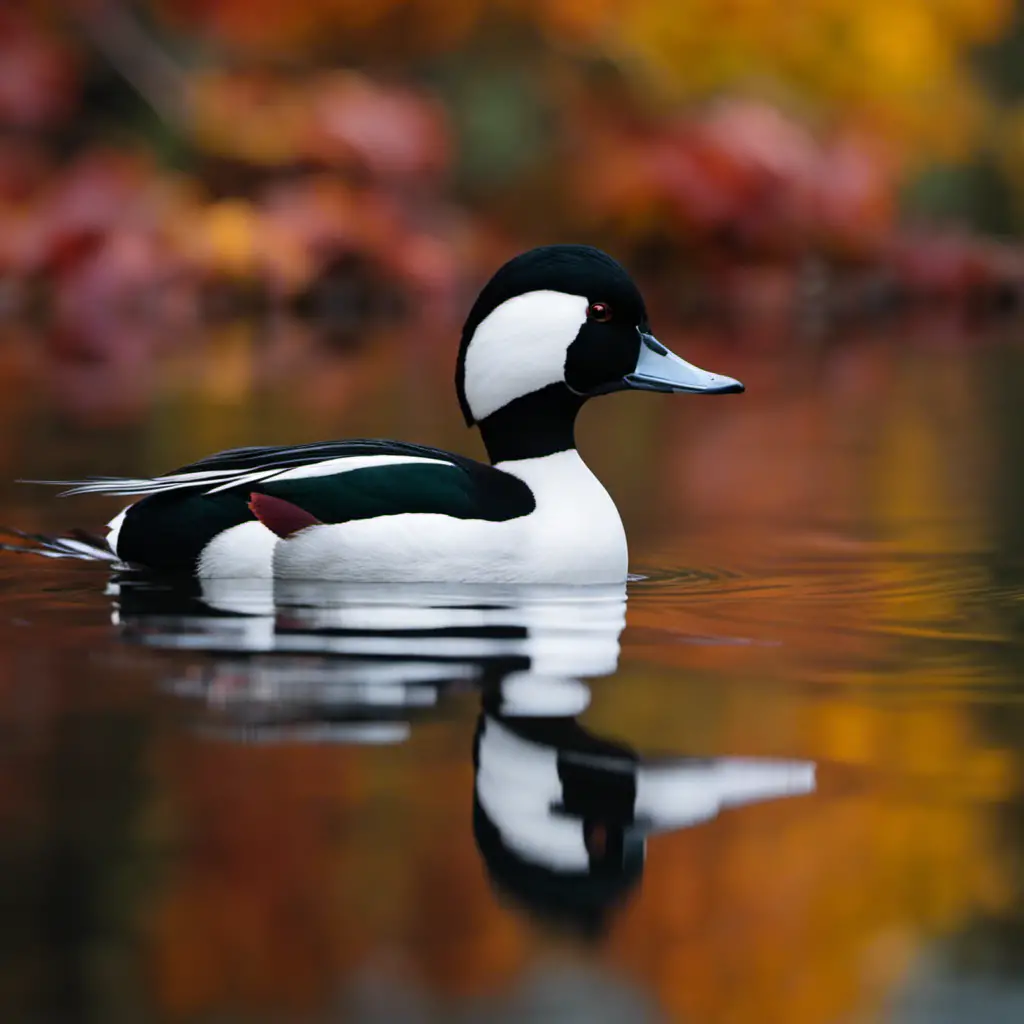
You’ll be fascinated by the striking black and white plumage of the Bufflehead, a small diving duck found in Pennsylvania. These ducks have intricate patterns on their feathers, with the males sporting a large white patch on the back of their heads.
Buffleheads are known for their unique migration patterns. They breed in the boreal forests of Canada and Alaska and then migrate south to the coastal regions of the United States during the winter months.
Buffleheads prefer habitats with shallow waters, such as ponds, lakes, and coastal estuaries. They can often be found near submerged vegetation, as they feed on insects, small fish, and crustaceans. These ducks are capable of diving to great depths in search of food, using their agile underwater swimming skills.
Buffleheads are fascinating creatures that have adapted to their environment in remarkable ways.
Common Goldeneye
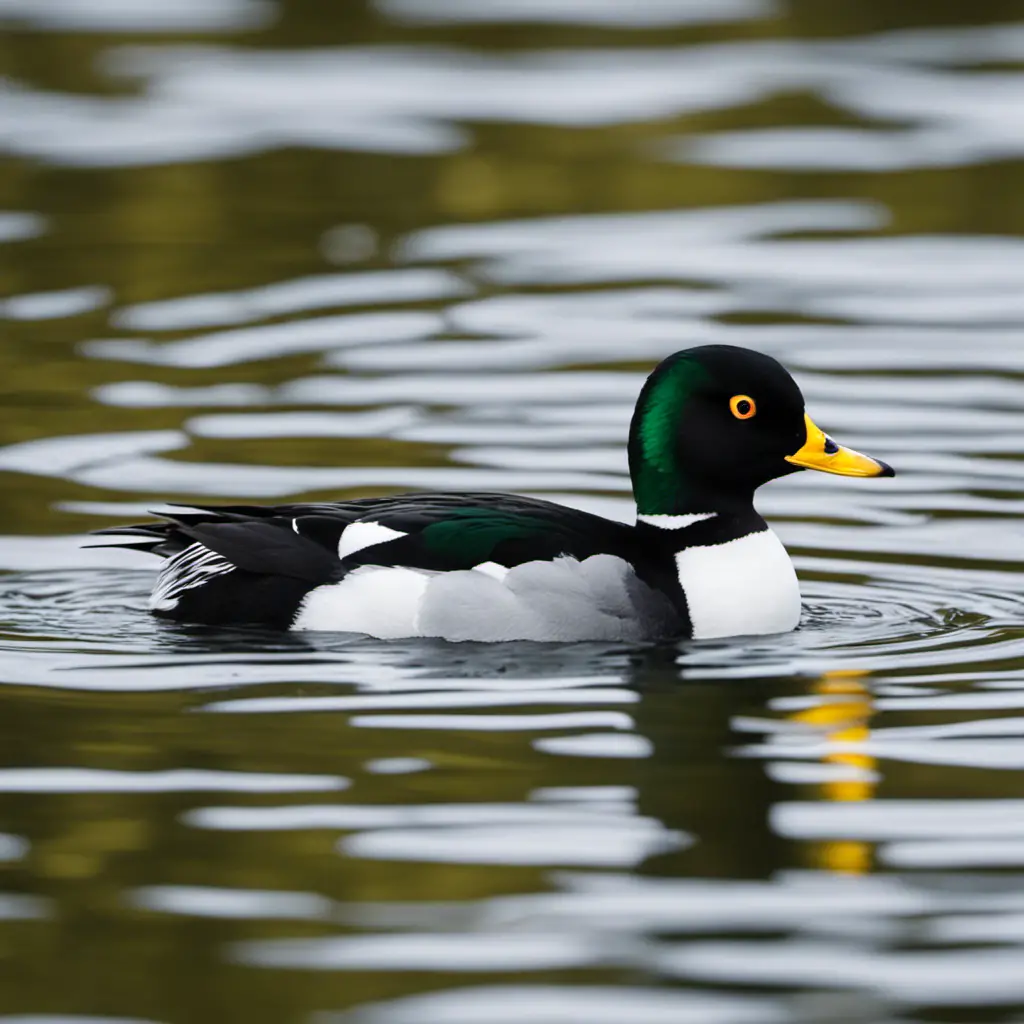
You might spot the Common Goldeneye in Pennsylvania’s coastal estuaries, as these diving ducks prefer habitats near submerged vegetation. They’re known for their distinctive appearance, with males having a dark head and a white body, while females have a brownish head and body.
Common Goldeneyes are primarily found in freshwater habitats, such as lakes, rivers, and ponds. They’re also known to breed in these areas, building their nests in tree cavities near water. During the breeding season, males display elaborate courtship behaviors, including head throwing and wing flapping, to attract females.
They’re also known for their diving capabilities, as they can plunge underwater in search of their favorite food, which consists mainly of small fish and aquatic invertebrates.
Overall, the Common Goldeneye’s habitat preferences and breeding behavior make it a fascinating species to observe in Pennsylvania’s coastal estuaries.
Hooded Merganser
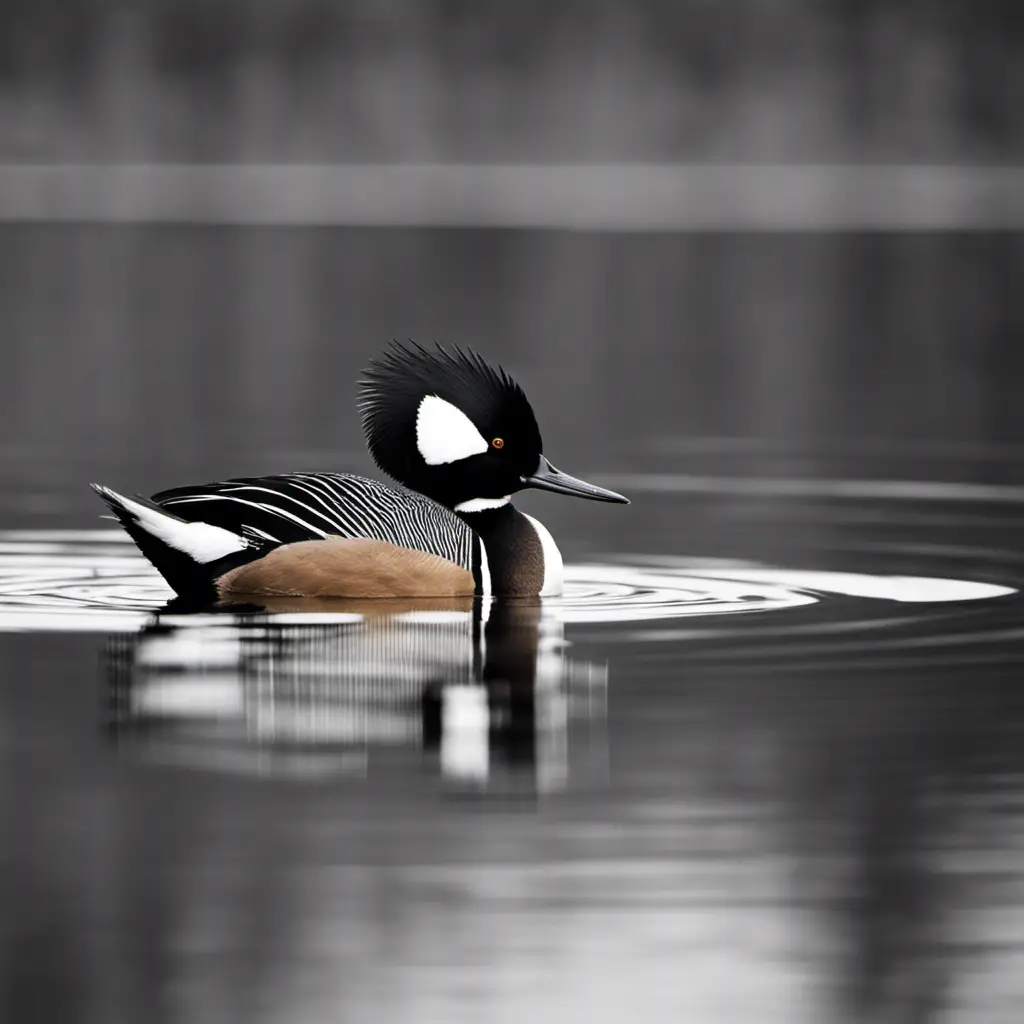
Have you seen the striking plumage of the male Hooded Merganser during breeding season? This small, diving duck is known for its distinctive appearance and fascinating breeding behavior. Here are some key points to help you understand more about the Hooded Merganser:
Breeding Behavior:
Males display their striking black and white crests during courtship rituals.
They engage in elaborate displays, such as head-throwing and wing-flapping, to attract females.
Females select mates based on the quality of their displays.
After mating, females construct nests in tree cavities near water bodies.
The male leaves the female soon after mating and doesn’t assist with incubation or chick rearing.
Habitat Preferences:
Hooded Mergansers prefer freshwater habitats, such as wooded swamps, marshes, and lakes.
They require clear water with abundant submerged vegetation for foraging.
They’re cavity nesters and often use old woodpecker holes or natural tree cavities for nesting.
They’re commonly found in North America, including the eastern and central parts of the United States.
Understanding the breeding behavior and habitat preferences of the Hooded Merganser can provide valuable insights into their conservation and management.
Common Merganser

Do you know the preferred habitats of the Common Merganser, such as rivers, lakes, and ponds? Common Mergansers are large diving ducks that can be found in various bodies of freshwater across North America, including Pennsylvania. These ducks are known for their distinctive appearance and interesting behavior. They have long, slender bodies, serrated bills, and striking black and white plumage. The table below provides a summary of key information about the Common Merganser:
| Common Merganser | |
|---|---|
| Scientific Name | Mergus merganser |
| Habitat | Rivers, lakes, ponds |
| Behavior | Diving for fish, forming large flocks during migration |
Common Mergansers are skilled divers and primarily feed on fish, using their sharp bills to catch their prey underwater. They are also known to form large flocks during migration, making them a fascinating species to observe. So if you happen to be near a river, lake, or pond in Pennsylvania, keep an eye out for these magnificent ducks and their intriguing behavior.
Ruddy Duck
Take a look at the unique plumage of the Ruddy Duck, a small diving duck found in Pennsylvania’s bodies of water.
The Ruddy Duck is known for its striking breeding plumage, which consists of a bright chestnut body, a blue bill, and a white cheek patch. During the breeding season, male Ruddy Ducks perform elaborate courtship displays that involve head throwing and neck pumping. These displays are believed to attract females and establish dominance among males.
In terms of migration patterns, Ruddy Ducks are known to migrate to the southern United States and Mexico during the winter months. They typically breed in freshwater marshes and wetlands, and their nests are often constructed in dense vegetation near the water’s edge.
Understanding the breeding habits and migration patterns of the Ruddy Duck provides valuable insights into their behavior and conservation needs.
Frequently Asked Questions
What Is the Lifespan of a Wood Duck?
The lifespan of a wood duck varies depending on factors such as predation, habitat quality, and disease. However, on average, wood ducks can live up to 10-15 years in the wild.
How Do Mallards Differ From Other Duck Species Found in Pennsylvania?
Mallards, found in Pennsylvania, differ from other duck species. They have unique mating habits and feeding behavior. During mating, males exhibit courtship displays. In terms of feeding, mallards are omnivorous, consuming both plants and small invertebrates.
What Is the Preferred Habitat of the Blue-Winged Teal?
The preferred habitat of the blue-winged teal is diverse, including both freshwater and saltwater environments. During migration, they can be found in wetlands, marshes, and flooded fields. For breeding, they prefer shallow wetlands with abundant vegetation.
Are Northern Shovelers Commonly Seen in Pennsylvania During the Winter Months?
Yes, northern shovelers are commonly seen in Pennsylvania during the winter months. Understanding the migratory patterns of ducks in Pennsylvania can help explain their presence during this time.
How Do Gadwalls Differ in Appearance From Other Ducks in Pennsylvania?
Gadwalls, a species of duck found in Pennsylvania, can be distinguished from other ducks by their unique appearance. They have a brownish-gray body, a black rear end, and a white belly.
What Types of Ducks Can Be Found in Pennsylvania?
Pennsylvania offers a diverse range of habitats, making it an attractive destination for various warblers species in pennsylvania. From the stunning Blackburnian Warbler with its vibrant orange throat, to the energetic Cape May Warbler adorned with unique tiger-like stripes, these colorful birds can be spotted all across the state. Other common warblers in Pennsylvania include the Yellow Warbler, Magnolia Warbler, and the tiny yet melodious Nashville Warbler. Pennsylvania truly offers a haven for bird enthusiasts seeking to spot a plethora of warbler species.
Conclusion
In conclusion, Pennsylvania is home to a diverse array of ducks, including the Wood Duck, Mallard, Blue-winged Teal, Northern Shoveler, Gadwall, Common Goldeneye, Hooded Merganser, Common Merganser, and Ruddy Duck.
These species can be found in various habitats throughout the state, from wetlands to lakes and rivers.
Their unique characteristics and behaviors contribute to the ecological balance of Pennsylvania’s ecosystems.
Studying and protecting these ducks is essential for preserving the state’s biodiversity and ensuring their long-term survival.

An avid ornithologist, zoologist and biologist with an unwavering passion for birds and wild animals.
Dr. Wilson’s journey in ornithology began in childhood and led him to obtain a Ph.D. in Ornithology from the prestigious Avian Research Institute. He has worked closely with renowned experts in the field and conducted extensive research and field studies globally.


